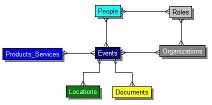| BI Layer |
Presents the data required for BI Analysis and Reports.The Model generally looks like the Semantic Data Model, in the next level. |
A BI Dashboard monitoring the Environment in Local Government ...
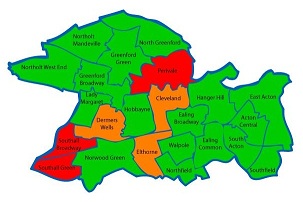
|
Data Model for the Dashboard on the left ...
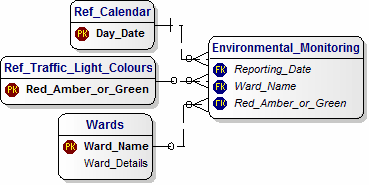
|
A BI Dashboard monitoring the OnTime Delivery (OTD) Performance of individual Stores is shown here ...

|
Data Model for the Dashboard on the left ...
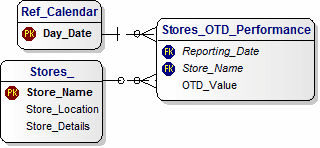
|
Semantic Models present a 'Business User Friendly' view of the the data.
For example, talking about 'Customers' instead of 'Parties'.
These two examples help to explain.
|
Semantic Data Model for Customers, Orders and Products ...
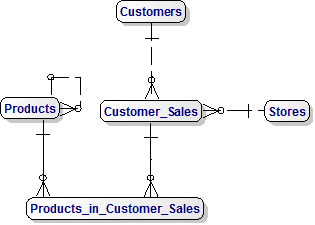
|
Semantic Data Model for Suppliers, Deliveries and Products ...
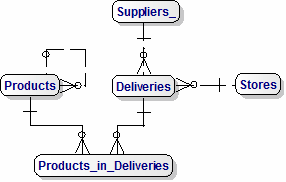
|
| Data Marts Present the restricted sets of data required for specific Report families.
They usually have the same Dimensions and Facts structure that we find in Dimensional Models.
|
Data Mart for Customers, Orders and Products ...
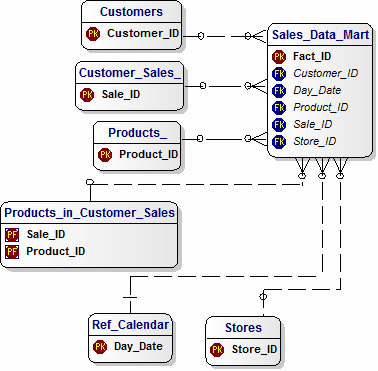
|
Data Mart for Suppliers, Deliveries and Products ...
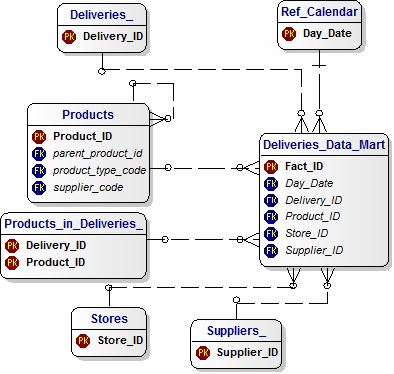
|
Dimensional Models
Here is an example of a Generic Data Mart :-
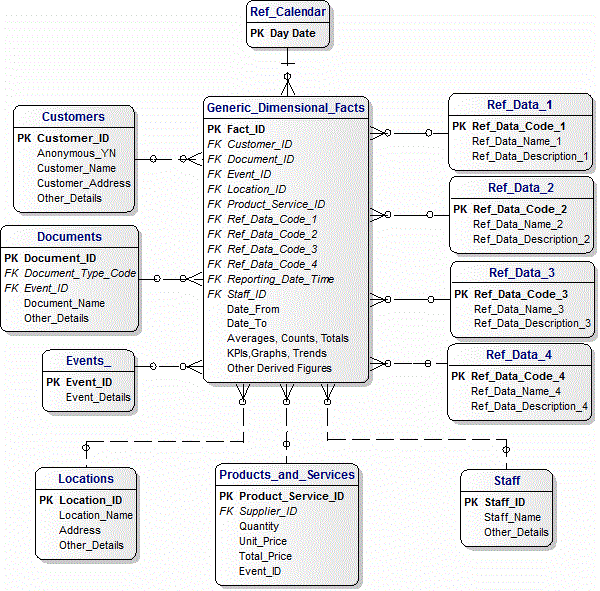
|
A Data Warehouse in Third Normal Form helps to ensure a Single View of the Truth.
It can be a subset of the more comprehensive Enterprise Data Model.
|
This is an example of a 3NF Data Warehouse for the Canonical Data Model :-
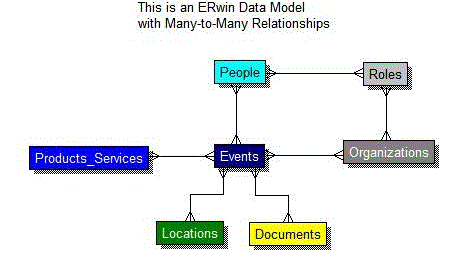
|
Enterprise Data Model (EDM)
EDMs can be one of two types -
a very large Model with perhaps hundreds of Entities or a smaller Model with details in Subject Area Models.
|
Here is an example of an EDM for a Retail business ...
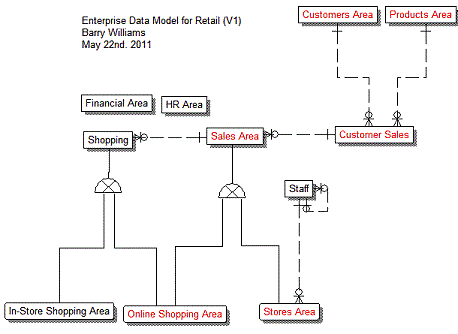
|
|
Subject Area Data Models |
Pretty much essential - in other words, if you don't find one, then there is something wrong. |
We also designed this Data Model for Deliveries.
This will support our Deliveries Data Mart |
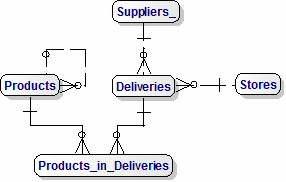
|
|
From the ODS, we have derived the design of a 3NF Data Model for the Customer Sales Subject Area.
|

|
Operational Data Stores can be in a range of formats - from a simple CSV file, to an ODBC connection, to a bespoke SAP or Salesforce interface.
Here are my wife and myself on a recent holiday in Malaysia riding on an Elephant, with the "ticket to ride" (ie the ODS) and the ODS Entity :-


|
Here is the Data Model for the Malaysian Generic Sales Receipt ...
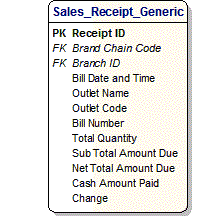
|

